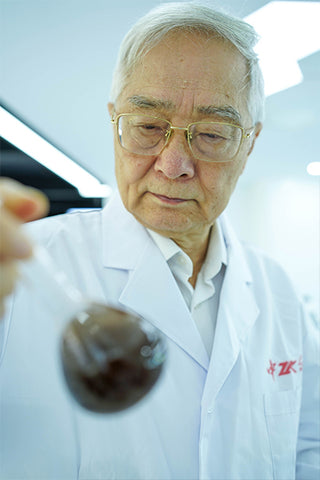 Call Us:1-718-886-8842
Call Us:1-718-886-8842 service@uszhongke.com
service@uszhongke.comFree U.S. Shipping on Orders $29.00+
Shipping is free for any purchase over$300+
- Gluten-Free
- Dairy-Free
- Vegetarian
- Organic
- Non-GMO
- Cruelty-Free
Do you know Reishi Mushroom's Life Cycle
- Home
- Health Guide Do you know Reishi Mushroom's Life Cycle

Do you know Reishi Mushroom's Life Cycle
- SCI SINO
During the summer and fall, the fruity body or mushroom of Ganoderma lucidum releases millions of spores into the air. These spores are blown to new places and, if conditions are right, the spores can germinate and form primary mycelia. The new primary hypha must find a mate to continue to grow. The process is similar to that of sperm and egg fusing into a more complete organism, although the fungus's nuclei do not fuse as they do when an animal fertilises itself. Instead, the process is called plamogamy, meaning that the cytoplasm has fused together.

The fungus is now in a dikaryotic state (n+ N). The fungus does not produce secondary hyphae to aid growth. The secondary hyphae produce a strong enzyme that breaks down chemicals to help break down wood. As long as the wood is available, the secondary hyphae can continue to grow for many years. These hyphae can branch to increase the surface area for nutrient absorption. All of these mycelia together are called mycelia.
 When conditions are ultimately not suitable for optimal growth; The fungus must produce a daughter body to release the sexual spore, which can spread to more favorable conditions. These fruiting bodies, commonly called mushrooms, produce basidia. It is in these rod-like structures that the nucleus eventually binds in a process called Karogagmy (2n). The diploid cells are then broken down into four haploid (N) spores by a process called meiosis. When this process is complete, the spores are released from the basidium. In ganoderma lucidum, the basidium is located below the frustum. The topside is usually a rigid structure that is not responsible for releasing any spores. Once the spores are released into the air, the cycle begins again.
When conditions are ultimately not suitable for optimal growth; The fungus must produce a daughter body to release the sexual spore, which can spread to more favorable conditions. These fruiting bodies, commonly called mushrooms, produce basidia. It is in these rod-like structures that the nucleus eventually binds in a process called Karogagmy (2n). The diploid cells are then broken down into four haploid (N) spores by a process called meiosis. When this process is complete, the spores are released from the basidium. In ganoderma lucidum, the basidium is located below the frustum. The topside is usually a rigid structure that is not responsible for releasing any spores. Once the spores are released into the air, the cycle begins again.
Blog Categories
Recent Post
Archive
- September 2023
- July 2022
- May 2022
- January 2021
- November 2020
- October 2020
Tags

WE SHIPPING
WORLDWIDE

100% MONEY BACK
GUARANTEE

100% SECURED
PAYMENT

14-DAY RETURN
POLICY
Contact Us
136-33 37 Ave, Flushing, NY 11354
- 1-718-886-8842
- service@uszhongke.com
Copyright © Sino-Sci. All Rights Reserved










